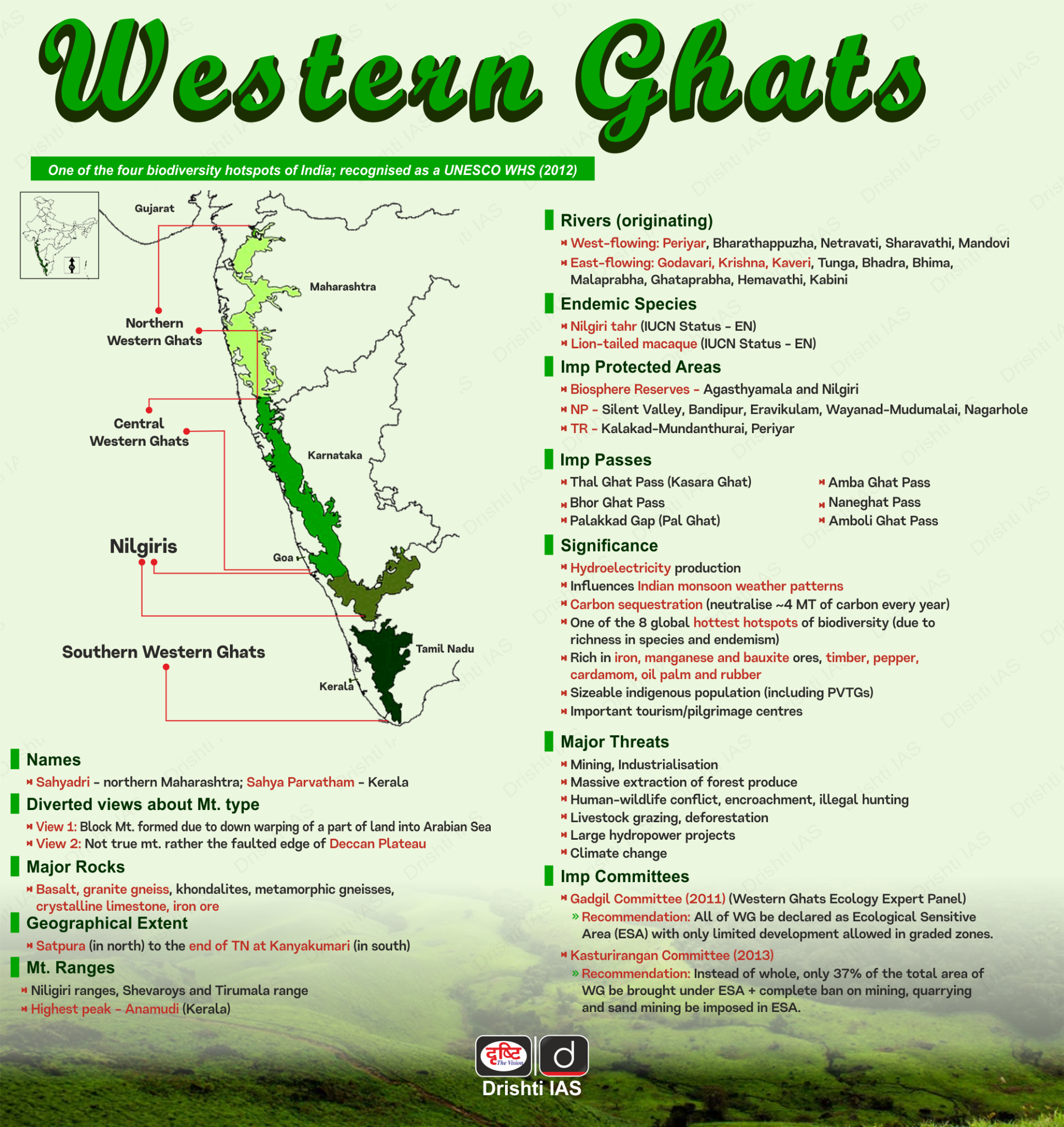Dicliptera Polymorpha | 15 Nov 2024
Why in News?
Recently, Scientists from the Agharkar Research Institute (ARI), an autonomous institute under the Department of Science & Technology (DST), have discovered a new species of Dicliptera, named Dicliptera Polymorpha in the Northern Western Ghats of India.
What are the Key Findings Related to Species?
- Unique Traits of Dicliptera Polymorpha:
- Fire Resilience: It can survive summer droughts and adapt to grassland fires.
- Dual Blooming Pattern: Blooms post-monsoon (November–April) and again in May–June after fires.
- Morphological Distinction: It has inflorescence flower structures that are uncommon in Indian species but similar to those found in African species.
- Adaptations to Harsh Conditions:
- Thrives on open grassland slopes in the Western Ghats.
- Woody rootstocks produce dwarf flowering shoots during the second flowering phase.
- Threats to Species:
- Human-Induced Fires: While fires can help the species bloom again, too many or poorly controlled fires could harm its habitat.
- Habitat Overuse: Overgrazing and land-use changes threaten grassland biodiversity.
What are Key Facts About the Western Ghats?
- About:
- The Western Ghats, also known as the Sahyadri Hills, are well known for their rich and unique assemblage of flora and fauna.
- The range is called Sahyadri in northern Maharashtra, Nilgiri hills in Karnataka and Tamil Nadu and Anaimalai hills and Cardamom hills in Kerala.
- It is recognized as a UNESCO World Heritage Site.
- Western Ghats is home to India’s two biosphere reserves, 13 National parks, several wildlife sanctuaries and many Reserve Forests.
- It comprised the evergreen forests of Nagarahole, deciduous forests of Bandipur National Park and Nugu in Karnataka and adjoining regions of Wayanad and Mudumalai National Park in the states of Kerala and Tamil Nadu.
- Global Biodiversity Hotspot:
- One of India's four recognized biodiversity hotspots, it is home to many endemic and yet-to-be-discovered species.
- Conservation Efforts for Western Ghats:
- Gadgil Committee (2011):
- It is also known as the Western Ghats Ecology Expert Panel (WGEEP).
- The committee recommended that all of the Western Ghats be declared as the Ecological Sensitive Areas (ESA) with only limited development allowed in graded zones.
- Kasturirangan Committee (2013): It sought to balance the development and environment protection in contrast to the system proposed by the Gadgil report.
- The Kasturirangan committee recommended that instead of the total area of Western Ghats, only 37% of the total area should be brought under ESA and a complete ban on mining, quarrying and sand mining be imposed in ESA.
- Gadgil Committee (2011):
UPSC Civil Services Examination, Previous Year Questions (PYQs)
Prelims:
Q. Recently, our scientists have discovered a new and distinct species of banana plant which attains a height of about 11 meters and has orange coloured fruit pulp. In which part of India has it been discovered? (2016)
(a) Andaman Islands
(b) Anaimalai Forests
(c) Maikala Hills
(d) Tropical rain forests of northeast
Ans: (a)


